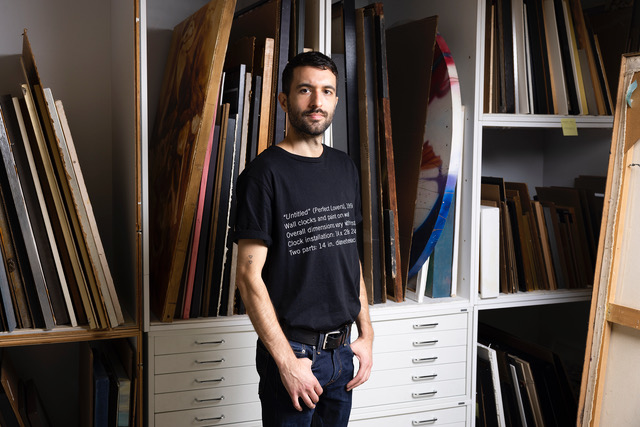
On July 24, John Anderies, director of the John J. Wilcox Jr. Archives of the William Way LGBT Community Center, formally announced Rami George had been engaged as the Archives’ first Artist-in-Residence, an opportunity that extends to December with an option for extension.
At the time of the announcement, George, an artist and curator who resides in Philadelphia, had already worked with the Archives on several different projects. In 2017, George relocated to Philadelphia to attend grad school, working for an MFA from Penn. Their first research project involved examining Philadelphia’s LGBTQ+ historical markers, for which they used the Archives as their principal source.
George then curated an exhibition for the Center’s lobby titled “Selections from the Archives,” which opened in January and ran through February earlier this year. In that exhibition, George presented archive materials that showcased histories within the LGBTQ+ community.
George’s most recent project with the Archives was a collaboration with Mural Arts, an installation called “And Into the Streets,” which presents images and materials from defunct LGBTQ+ news publication, Au Courant. The installation is currently on display in Kahn Park at 11th and Pine Streets, in the heart of the Gayborhood. It was originally scheduled to be in place through August, but has been extended through October.
“I’ve been spending so much time in the Archives lately that it feels like a second home,” George said on the announcement of their appointment. “I’m so grateful for the opportunity to continue my time and research with this incredible resource, as well as help shape what this sort of residency might look like in the future.”
Archives Director John Anderies says he had been pondering the notion of an artist-in-residence for some time, wondering what such a position would entail, and how it might benefit the Archives in its historical mission. His successful collaborations with Rami George made them a logical choice for what is, in effect, an experiment.
Rami George is an interdisciplinary artist who sees their role of Artist-in-Residence as a combination of artist and curator. Since the Wilcox Archives is Philadelphia’s most extensive collection of personal papers, organizational records, periodicals, audiovisual material and ephemera documenting Philadelphia’s LGBTQ+ community, George plans to use their residency to continue exploring the archival material. In this way, the Archives itself will suggest ideas for future projects.
However, any future plans involving the Archives will have to work around major complications this fall. Scheduled tentatively for some time in the fall, the Center plans to shut down for a major renovation of their building. This means that the Archives will have to be relocated, probably to a variety of remote locations, for the duration. However, George has ensured that they will continue to have access to the materials for the duration, and that their work can continue. Of course, any future exhibitions will have to wait until the Center reopens, however long that might take.
One possible project will involve the Center’s exterior mural, which is facing destruction during the renovation. Tentative plans at this point involve documenting the history of the mural, how it was originally executed, determining what can be preserved, and in collaboration with Mural Arts, possibly working with the original artist to restore the mural after completion of the Center’s renovations.
One of George’s more informal functions will be to serve as an ambassador for the Archives, working with those who are interested in studying the archival process, and to make connections with similar LGBTQ+ archives in other cities.
“I want to explore different ways artists can engage with an archive,” George said of their primary goals.
As an artist, George’s work has been shown in exhibitions and screenings at the MIT List Visual Arts Center (Cambridge); Anthology Film Archive (New York); Centre for Contemporary Arts (Glasgow); Grand Union (Birmingham); the Institute of Contemporary Arts (London); the Institute of Contemporary Art (Philadelphia); LUX (London); and the Museum of Contemporary Art Chicago.
